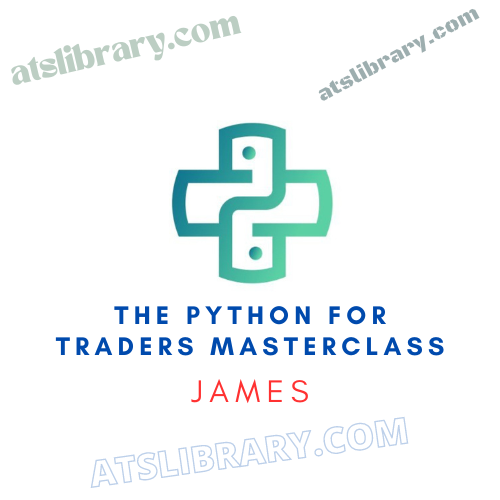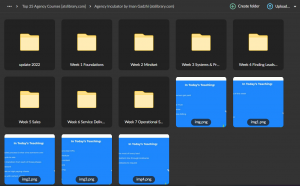About Course:
The Python for Traders Masterclass
8 Modules
4 Projects
105 Lessons
248 Code Examples
34 Hours of Content
Module 1: Introduction
- 1.1. Welcome to the Python for Traders Masterclass(2:14)PREVIEW
- 1.2. Why learn to code as a trader?(7:15)PREVIEW
- 1.3. Why should traders learn Python?(4:23)PREVIEW
- 1.4. What will I gain from this course?PREVIEW
- 1.5. What topics will be covered?PREVIEW
- 1.6. Who is the intended audience for this course?PREVIEW
- 1.7. How much finance knowledge do I need?(1:40)PREVIEW
- 1.8. How much coding knowledge do I need?(1:37)PREVIEW
- 1.9. Placement Quiz: Am I a good fit for this course?PREVIEW
- 1.10. Module QuizSTART
Module 2: Python Fundamentals for Finance
- 2.1. Python Installation and SetupSTART
- 2.2. Running Python CodeSTART
- 2.3. Basic Python(26:34)START
- 2.4. Intermediate Python(5:07)START
- 2.5. Advanced PythonSTART
- 2.6. Data Science in PythonSTART
- 2.7. Key library: PandasSTART
- 2.8. Key library: NumPySTART
- 2.9. Key library: MatplotlibSTART
- 2.10. Key library: StatsmodelsSTART
- 2.11. Key library: Scikit-learnSTART
Module 3: Working with Financial Data
- 3.1. Introduction to Financial Data: Time Series and Cross-SectionsSTART
- 3.2. Data Acquisition and Cleaning(18:09)START
- 3.3. Time Series Analysis(13:38)START
- 3.4. Understanding Stationarity(11:55)START
- 3.5. Time Series ForecastingSTART
- 3.6. Exploratory Data AnalysisSTART
- 3.7. Section summarySTART
Module 4: How to Code and Backtest a Trading Algorithm
- 4.1. So what is a trading algorithm?START
- 4.2. Algorithm Design PrinciplesSTART
- 4.3. Data Management Module(15:12)START
- 4.4. Signal Generation Module(15:12)START
- 4.5. Risk Management Module(10:58)START
- 4.6. Trade Execution Module(10:27)START
- 4.7. Portfolio Management Module(11:05)START
- 4.8. Backtesting BasicsSTART
- 4.9. Backtesting SoftwareSTART
- 4.10. Advanced Backtesting TechniquesSTART
- 4.11. Optimization and Parameter TuningSTART
Project 1: Research & Backtest a Realistic Trading Algorithm
- Project Overview(6:57)START
- Step 1: Getting Started on QuantConnect(6:53)START
- Step 2: Formulate a StrategySTART
- Solution: Formulate a StrategySTART
- Step 3: Develop the AlgorithmSTART
- Solution: Develop the AlgorithmSTART
- Step 4: Run a Backtesting AnalysisSTART
- Solution 4: Run a Backtesting AnalysisSTART
- Project SummarySTART
Module 5: Automated Data Collection, Cleaning, and Storage
- 5.1. Sourcing financial data(5:38)START
- 5.2. Working with CSVsSTART
- 5.3. Working with JSONSTART
- 5.4. Scraping data from APIs(51:35)START
- 5.5. Scraping data from websitesSTART
- 5.6. Persisting data: files and databasesSTART
- 5.7. Section summarySTART
Module 6: Analyzing Fundamentals in Python
- 6.1. Structured vs. Unstructured DataSTART
- 6.2. Types of Fundamental DataSTART
- 6.3. Gathering & Cleaning Fundamental DataSTART
- 6.4. Automated Screening & FilteringSTART
- 6.5. Statistical Analysis of Fundamental DataSTART
- 6.6. Natural Language Processing on News ArticlesSTART
- 6.7. Natural Language Processing on Annual ReportsSTART
- 6.8. Using LLMs for Natural Language ProcessingSTART
Module 7: Options & Derivatives Pricing Models
- 7.1. Introduction to Options & DerivativesSTART
- 7.2. Basics of Option PricingSTART
- 7.3. The Binomial Options Pricing ModelSTART
- 7.4. The Black-Scholes-Merton ModelSTART
- 7.5. Monte Carlo Simulation for Option PricingSTART
- 7.6. Introduction to Exotic OptionsSTART
- 7.7. Interest Rate Derivatives and Term StructureSTART
- 7.8. Implementing Finite Difference Methods for Option PricingSTART
- 7.9. Volatility and Implied VolatilitySTART
- 7.10. Advanced Topics and Modern Developments (Optional)START
Project 2: Volatility Surface Analysis Tool
- Project OverviewSTART
- Step 1: Fetching Options DataSTART
- Solution: Fetching Options DataSTART
- Step 2: Calculating Implied VolatilitiesSTART
- Solution: Calculating Implied VolatilitiesSTART
- Step 3: Plot a 3D Volatility SurfaceSTART
- Solution: Plot a 3D Volatility SurfaceSTART
- Project SummarySTART
Module 8: Introduction to High-Frequency Trading
- 8.1. What is High Frequency Trading (HFT)?START
- 8.2. Handling High-Frequency Tick DataSTART
- 8.3. Latency Measurement and SimulationSTART
- 8.4. Understanding the HFT Market Making StrategySTART
- 8.5. Understanding Statistical Arbitrage with High-Frequency DataSTART
- 8.6. Signal Processing for HFTSTART
- 8.7. Real-time News ProcessingSTART
- 8.8. Section summarySTART
Project 3: Design & Build a Limit Order Book
- Project OverviewSTART
- Step 1: Design the Data StructureSTART
- Solution: Design the Data StructureSTART
- Step 2: Add FunctionalitySTART
- Solution: Add FunctionalitySTART
- Step 3: Simulate Live OrdersSTART
- Solution: Simulate Live OrdersSTART
- Project SummarySTART
Capstone Project: Coding a Simple HFT Market Making Bot
- Project OverviewSTART
- Step 1: Define a System and Class ArchitectureSTART
- Solution: Define a System and Class ArchitectureSTART
- Step 2: Define the Event LoopSTART
- Solution: Define the Event LoopSTART
- Step 3: Implement the Data FeedsSTART
- Solution: Implement the Data FeedsSTART
- Step 4: Implement the Order ManagerSTART
- Solution: Implement the Order ManagerSTART
- Step 5: Add Alpha to the Pricing StrategySTART
- Solution: Add Alpha to the Pricing StrategySTART
- Project SummarySTART


 Over 1.000 comments
Over 1.000 comments










